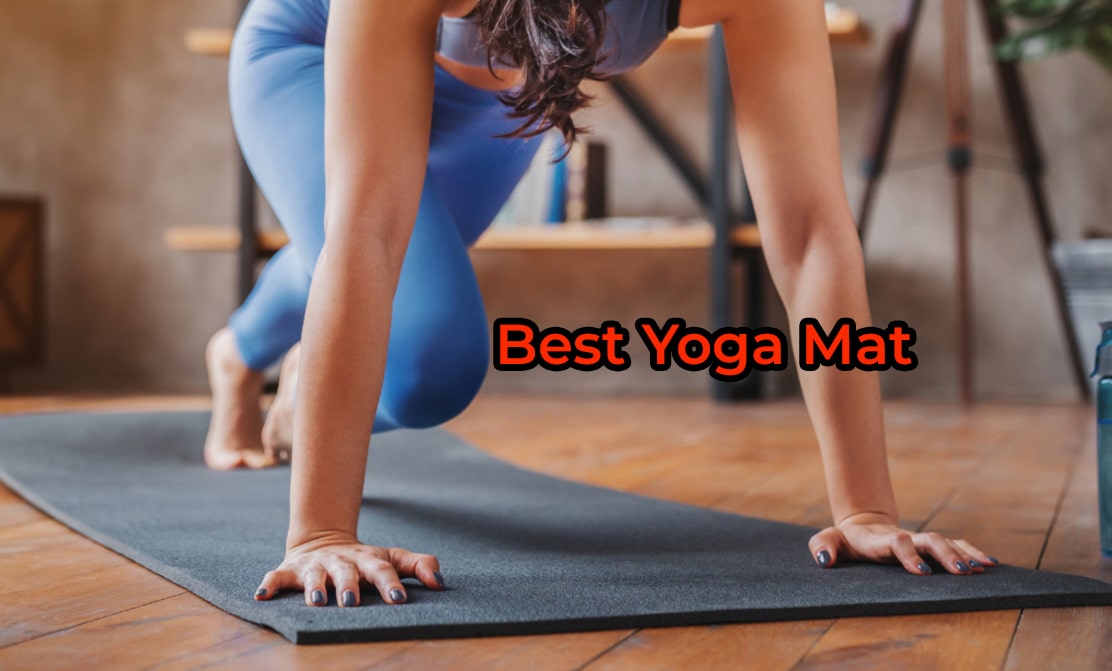The best yoga mat can make a big difference when you are practicing the poses and getting the most out of your practice. It can help you feel more comfortable, reduce injuries and improve your performance.
Yoga mats come in a variety of material types, thickness levels and designs. Some are even infused with cool textures and raised tactile patterns.

Image credit: https://m.media-amazon.com/images/I/41mWmOVXYoL._SL500
Understanding the Different Types of Yoga Mats
Choosing the best yoga mat is a critical step in your practice. There are many factors to consider, including material, thickness, grip, size, weight and design.
You should also consider your practice goals. For example, if you are looking to take your practice to the next level, you should look for a durable mat that is suitable for advanced poses and balances.
Some yoga mats are designed with a nonslip surface to help prevent your hands and feet from slipping during asana. Others are made with open-celled materials that are particularly absorbent.
Factors to Consider When Choosing a Yoga Mat
When choosing the best yoga mat, thickness, material, texture, stickiness, eco-friendliness and price should all be considered. These factors will determine how much your mat yields to pressure and wears over time, affecting its durability and longevity.
Thickness is a key factor in how well a mat supports your posture during various asanas and poses, while also keeping you safe from injury. Choose a mat that is thick enough to support you, but not so thick that it becomes hard or cumbersome to carry around.
There are a variety of different materials used to make yoga mats, including PVC, rubber, EVA and polyurethane. Each of these options has its own advantages and disadvantages.

Image credit: https://u7q2x7c9.stackpathcdn.com/photos/27/7/392237_30842_XL
Different Yoga Mat Materials
A yoga mat comes in a variety of materials. The material that your mat is made of can make a huge difference in its quality and effectiveness.
Some common yoga mat materials include natural rubber, PVC, TPE, PER, jute, cotton and cork. Some yoga mats are also made from recycled and biodegradable materials such as jute, a renewable resource.
When choosing a mat, it is important to consider your needs for comfort and portability. A thin mat, around 1/8 inch thick (3.175 mm), is ideal for beginners and those with petite frames who don’t want to feel like they’re getting caught in the floor when moving from pose to pose.
The Importance of Size
Choosing the best yoga mat right size is an essential component of a safe and comfortable practice. The wrong size can lead to injuries and discomfort.
Luckily, there are ways to determine the proper size for you. The easiest way is to work off of your height.
Typically, a 24×68 yoga mat is enough for most people who are 6ft tall or shorter. However, if you’re particularly tall, a longer mat (70 to 72 inches) may be helpful for your comfort.
Weight & Portability
Whether you’re new to yoga or a veteran, the right mat is crucial. It’s important to choose a mat that’s thick enough to cushion sore joints and prevent injuries while still being light enough to travel with.
Consider the surface where you’ll be practicing – at home, in a gym or even in an outdzide location if you have to travel with it. A mat that’s too thick may be hard to balance on, while a mat that’s too thin could hurt your joints or cause your hands and feet to get sore.
If you’re going to be traveling a lot, you may want to invest in a mat that can easily be transported. These can be smaller, easier to roll up and lighter weight.

Image credit: https://realqueenofclean/photos/a.10150166455970293/10163630880380293/?type=3
You also want to choose a mat that’s eco-friendly and made from materials that are biodegradable. This will help to keep your yoga mat out of landfills and out of harm’s way.
If you’re going to be sweating a lot during your practice, you’ll need a mat that has good grip when wet. This will help to prevent your hands and feet from slipping during your poses.
Yoga Mat Maintenance
Yoga mats spend a lot of time on the floor, soaking up sweat and abrasive dirt. That’s a breeding ground for bacteria, fungi, and other yucky stuff.
Regular disinfecting and deep cleaning are the best ways to keep your mat clean. Typically, this includes wiping it down with a gentle cleaning solution after each practice and giving it a deep clean about once a month.







Comments are closed.